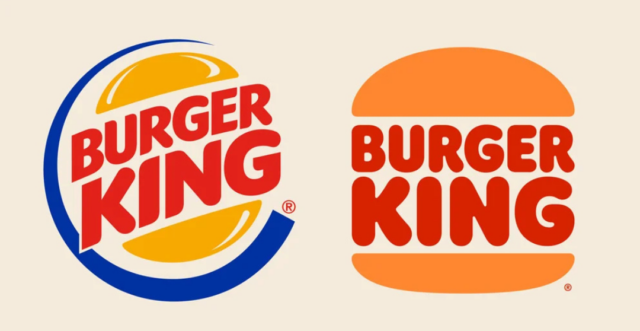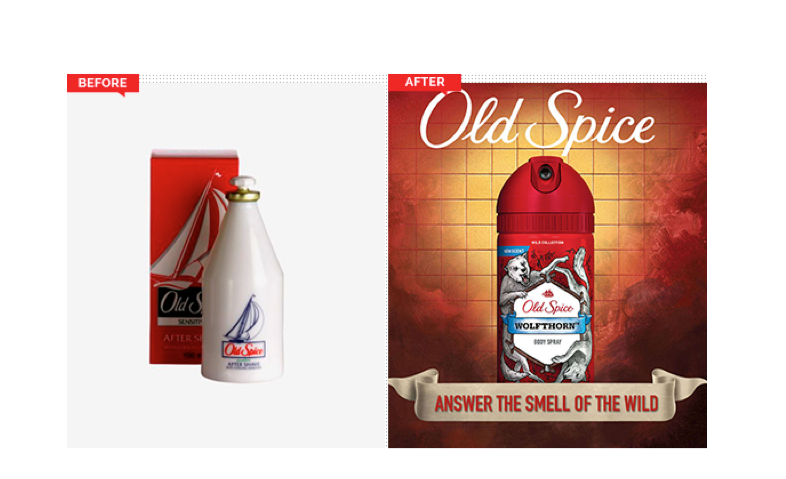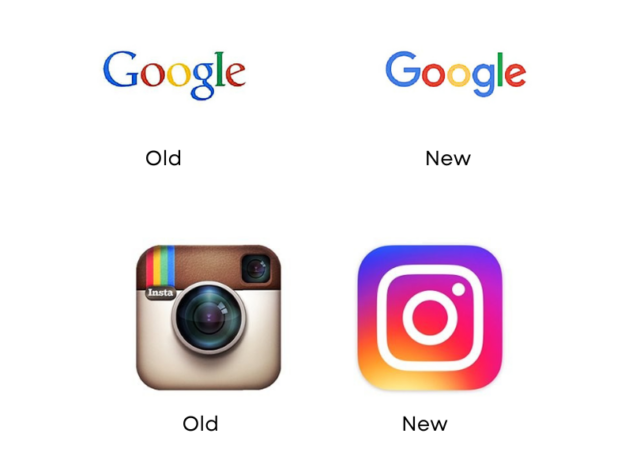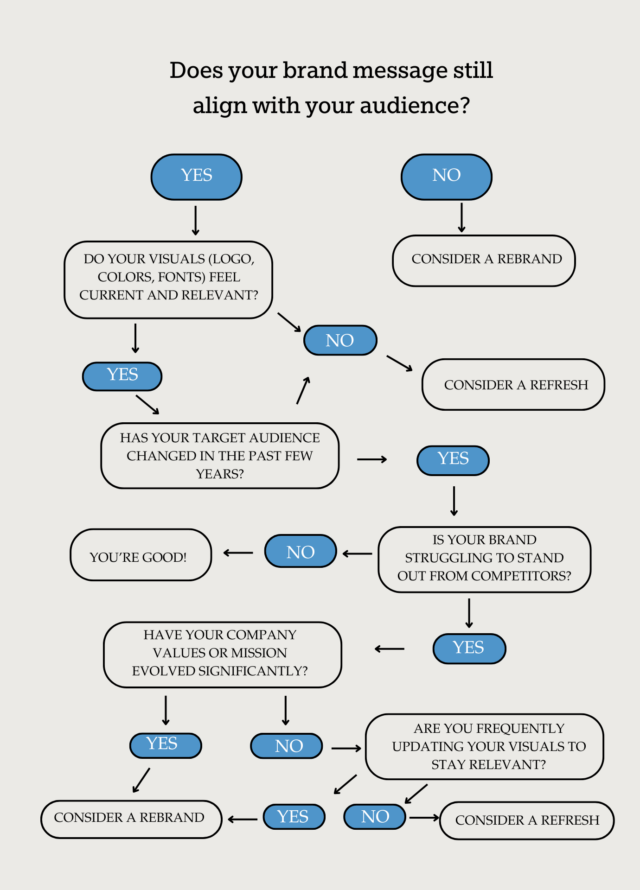Rebranding isn’t just about changing a logo or tagline; it’s about redefining the core of your business. It’s how people identify with you, feel connected, and ultimately choose to trust your brand. Crafting an irresistible brand is more than just gaining recognition; it’s about fostering a connection that clients can’t help but be drawn to. However, with evolving trends, every brand faces a crossroads. Keep in mind that branding is essential not only for recognition but also for staying relevant to your audience’s values. So, what’s next—a subtle update or a full-scale transformation? Discover how to create a brand clients won’t ignore and make a lasting impact that draws them back.
A brand refresh offers your business a timely update without changing its core identity. Think of it as tailoring a classic suit to keep it looking sharp and current. This approach can involve updating your logo, typography, or color scheme for a more modern appeal.
Burger King gave its logo a modern, retro-inspired refresh in 2021. By simplifying colors and shapes, the brand retained its recognizable essence while enhancing visual appeal for digital platforms. This refresh honored its heritage while renewing the brand’s image for today’s audience.

If a refresh is a paint job, a rebrand is knocking down walls and starting fresh. Rebranding is your business’s metamorphosis—a complete shift that leaves no stone unturned. It’s about digging deep into who your company has become, redefining its values, voice, and mission, and showing up in the world as something new.
Rebranding of Old Spice from a classic men’s grooming brand to one targeting younger consumers with a bold, humorous tone. This repositioning established Old Spice as a leader in the men’s grooming industry, connecting with a new generation of customers.

Understanding whether you need a refresh or rebranding is like deciding between a trim and a new haircut—each choice requires a level of commitment. Both options affect customer perception, brand identity, and ultimately, your audience’s connection. To dodge common pitfalls, take a look at top branding mistakes and learn how to avoid them.
A brand refresh offers quick results, keeping loyal fans connected and engaged. In contrast, a full rebrand can set your business up for substantial growth, drawing in new audiences, and creating a broader market impact. When aiming for a better way to build a brand, selecting the right approach ensures your brand remains fresh, relevant, and aligned with your goals.
Here’s the big question: How do you know which route to take? First, assess where you stand—poll your audience, map your strengths and weaknesses, and see what your competitors are up to. Next, define your goals. Are you looking to boost engagement or do you need a complete market pivot? And remember, both paths require commitment. So, choose the one that aligns with your vision for the future.
Consider a brand refresh if you notice these signs:
Google has periodically refreshed its logo, such as switching to a sans-serif font in 2015, creating a cleaner look while keeping its brand instantly recognizable.
In 2011, Coca-Cola launched a brand refresh to keep up with Pepsi’s aggressive, youth-focused campaigns. Pepsi had just rolled out vibrant new packaging and a series of high-energy ads that leaned into pop culture trends, targeting younger consumers. To keep pace, Coca-Cola updated its iconic logo and packaging with a modernized look, focusing on simplicity, cleaner lines, and a more unified global brand identity. They leaned heavily on the “Share a Coke” campaign, which connected with younger audiences by printing popular first names on bottles.

Sometimes, it’s not enough to refresh; a full rebrand may be necessary to reflect big shifts in mission or market position. A rebrand works when you need a complete reset—whether that’s to break from reputational baggage, enter new markets, or better reflect evolving values.
Dunkin’ Donuts rebranded to “Dunkin” in 2019 to reflect its focus beyond just donuts, repositioning as a quick-service food destination that also appeals to coffee lovers.
Uber undertook a rebrand in 2016 to address trust issues and emphasize reliability and safety, signaling a shift toward a more responsible, customer-focused brand image.
Whether you’re just freshening up or going for a full rebrand, the right approach keeps you relevant, strengthens emotional connections, and gives you that much-needed competitive edge. But beware: the wrong choice can leave loyal customers confused or alienated. Knowing when to update and when to rebuild can be the difference between a brand that thrives and one that just survives (or doesn’t).
Deciding between a refresh and a rebrand isn’t just about aesthetics; it’s about keeping your business relevant and aligned with your audience. Here’s a quick rundown:
2. Bottom Line Impact
3. Possible Missteps
4. Strategic Flexibility
5. Investment Commitment

Whether it’s a quick refresh or a rebrand, the goal is to adapt while staying true to your core. A clear, strategic approach to branding not only elevates your brand’s appearance but strengthens its impact on customers, creating lasting and meaningful connections. So, make the call that keeps your business fresh, memorable, and meaningful.
Ready to take your brand to the next level but unsure which path is right for you? Let’s make the decision easier. Reach out to our team for a personalized brand audit to help you discover if a refresh or full rebrand is the strategic move your business needs. Don’t let your brand get left behind—schedule your consultation today and let’s build a brand that stands out, stays relevant, and resonates.
